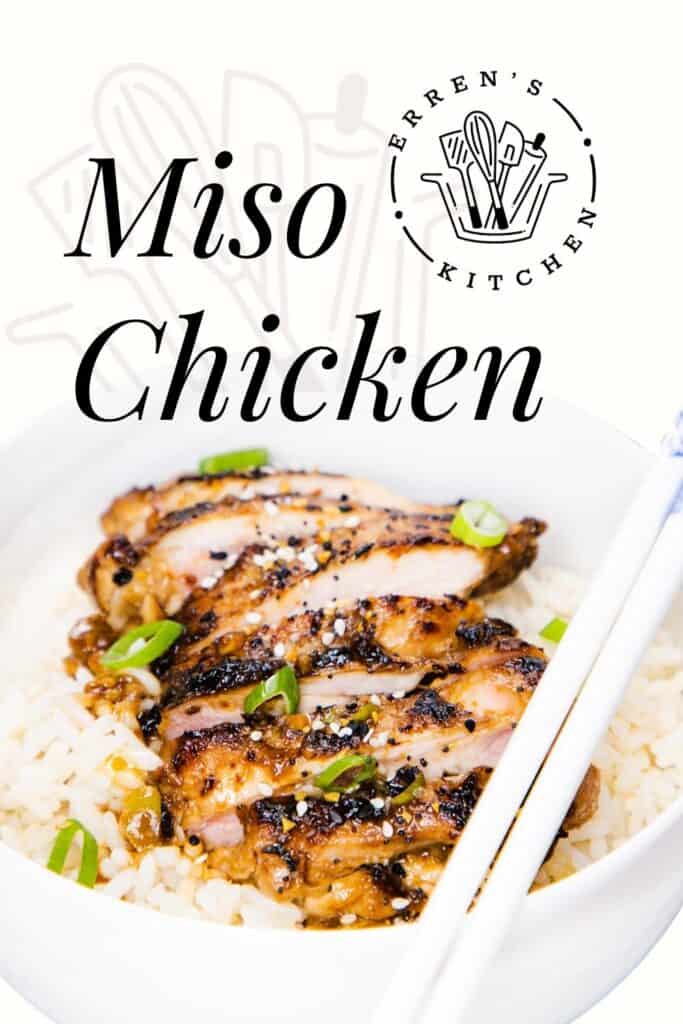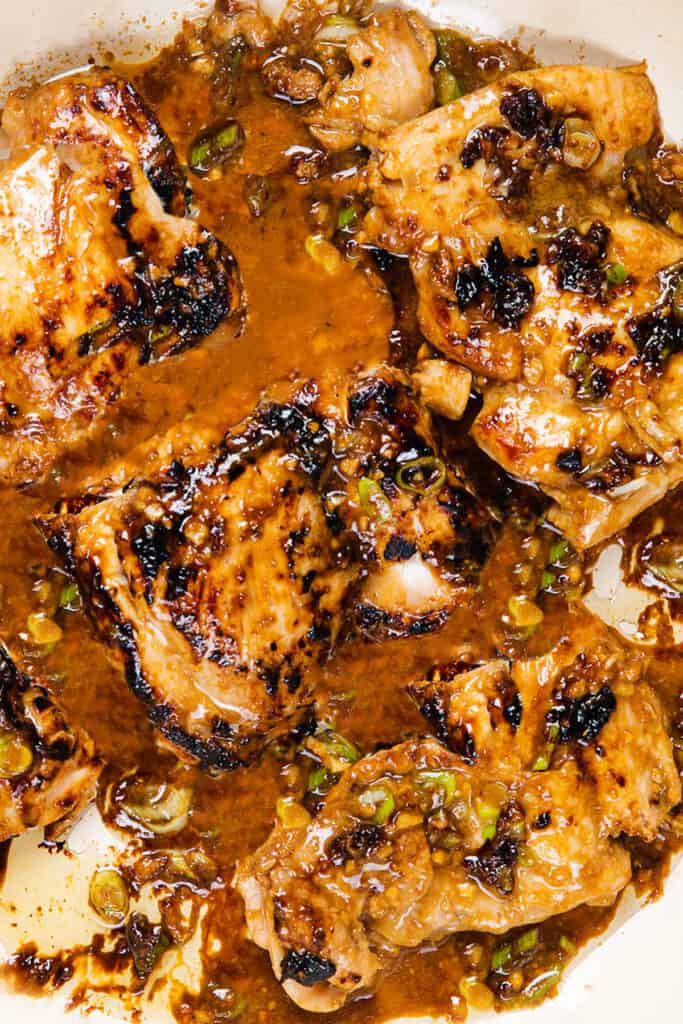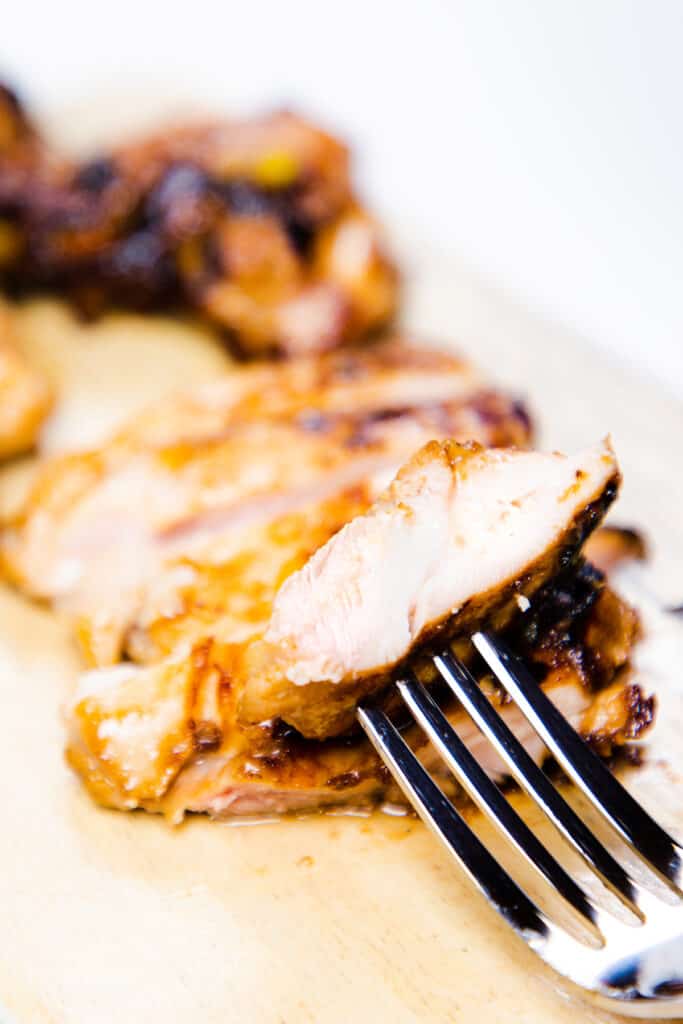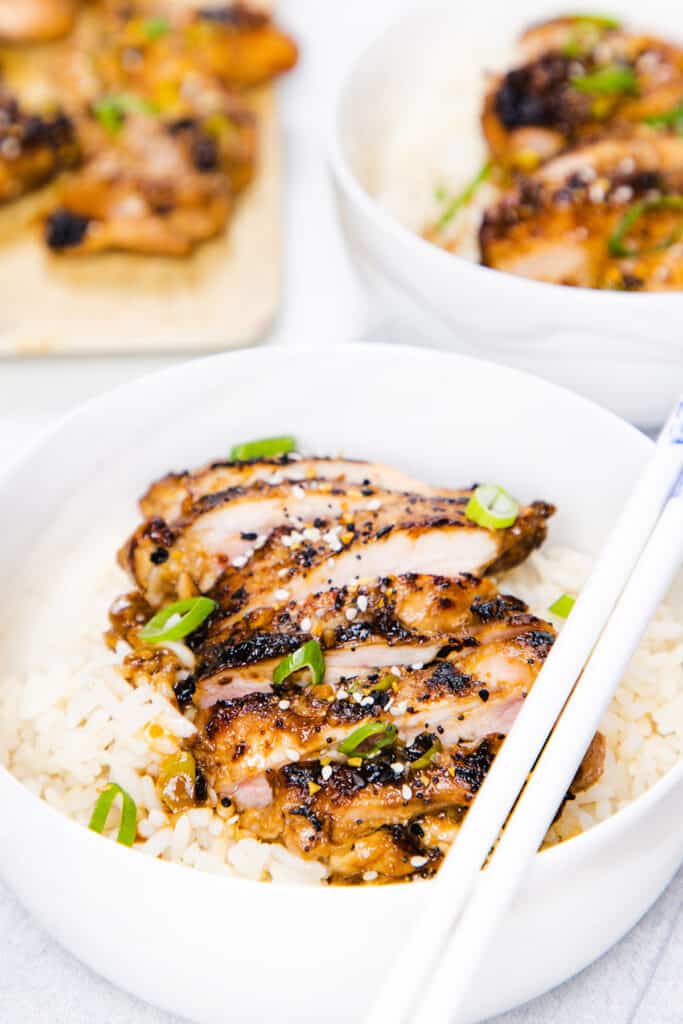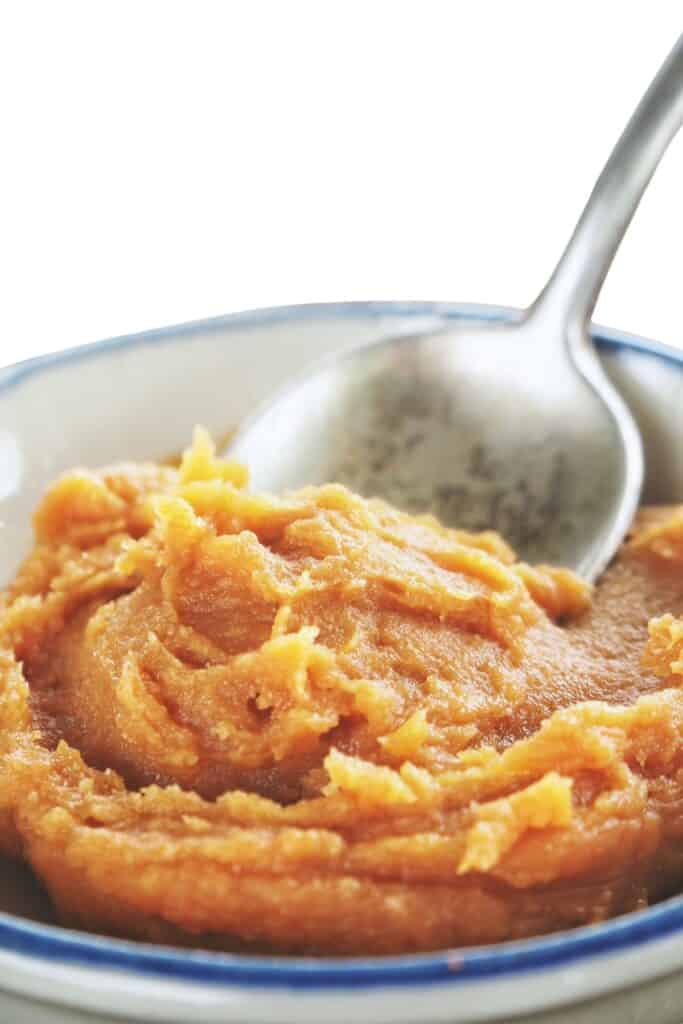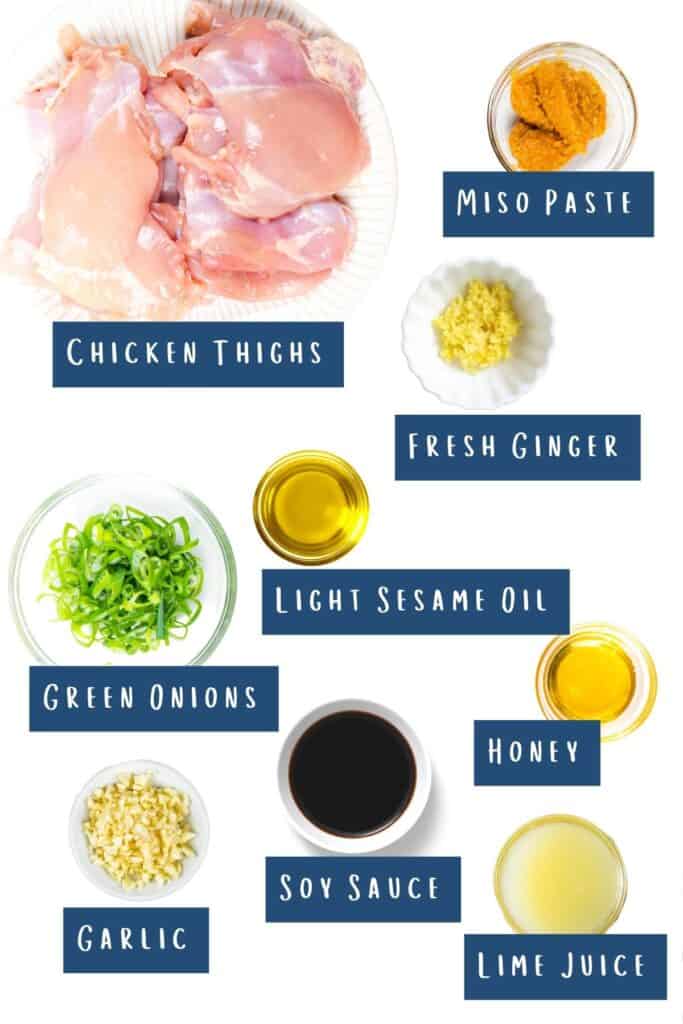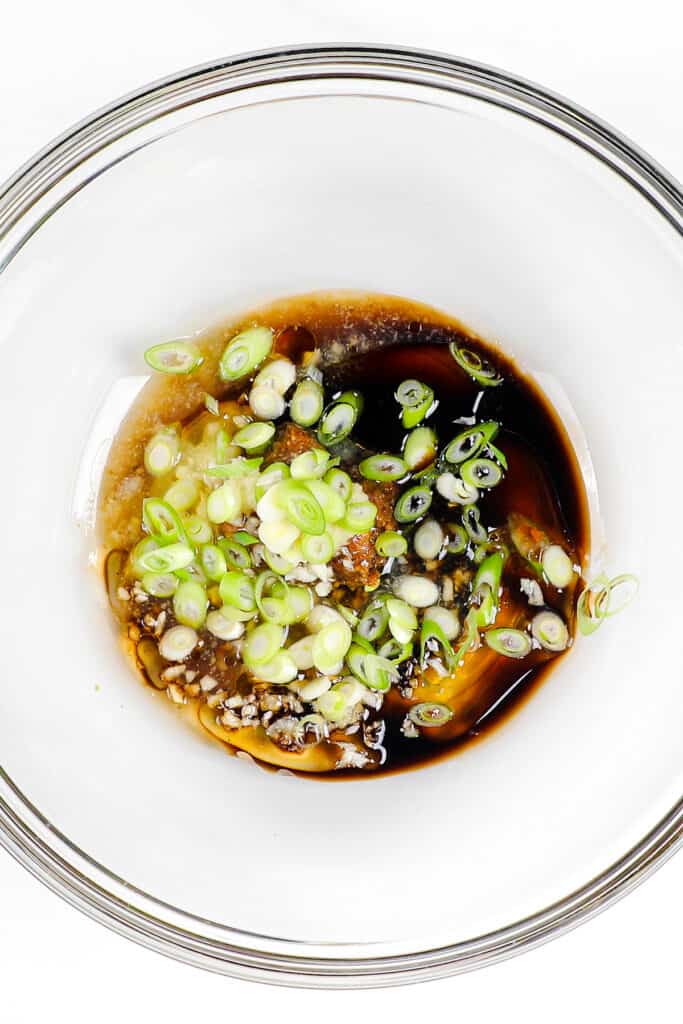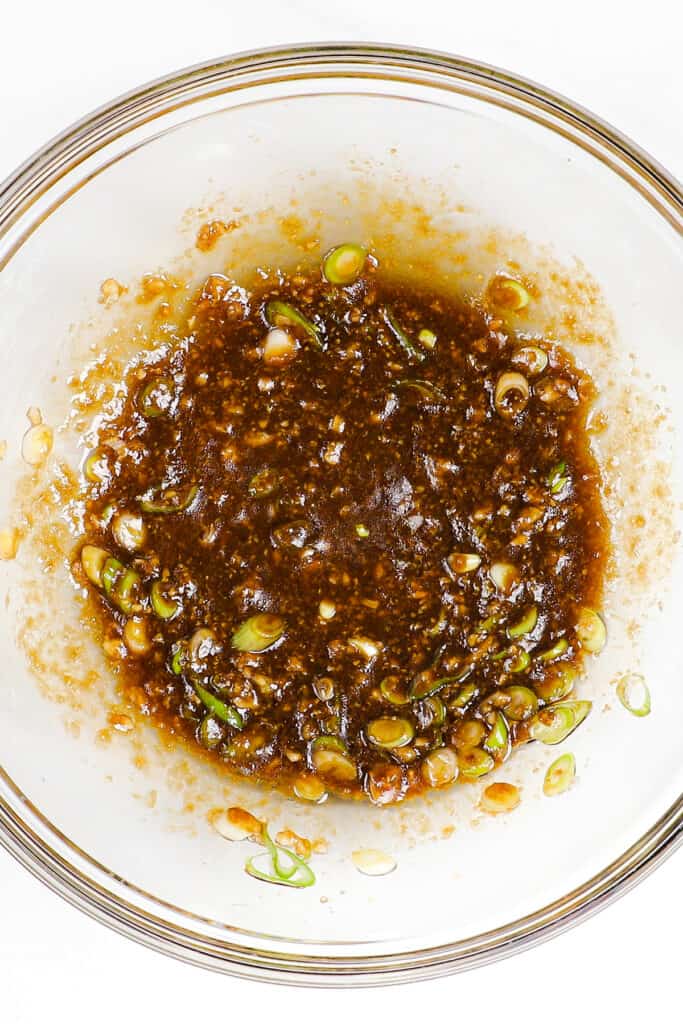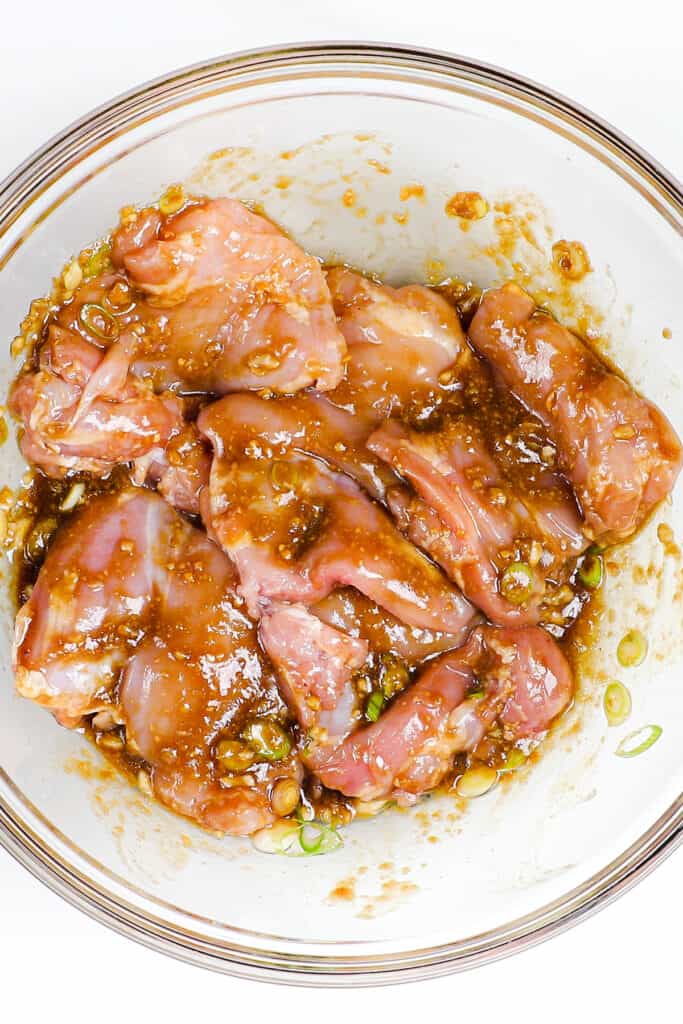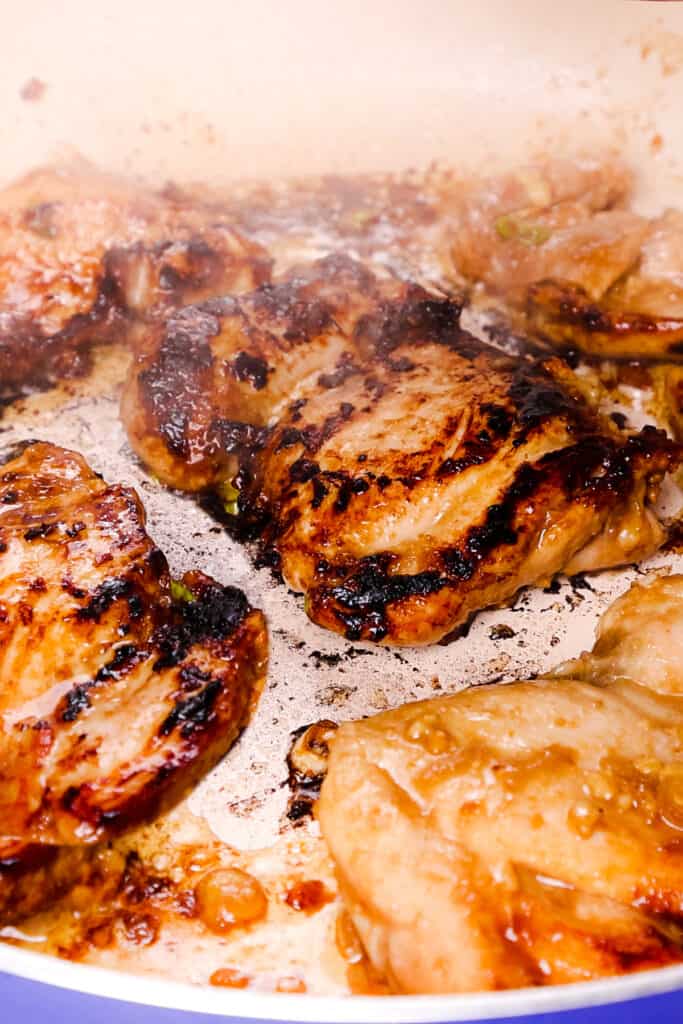Miso chicken is a delicious, Asian-inspired dish that uniquely flavors traditional chicken. This recipe combines the umami-rich flavors of miso paste, soy sauce, and ginger with a hint of sweetness from honey and a tangy kick of lime juice. The result is a juicy, flavorful chicken that will become a new dinner favorite. Once opened, miso paste can be kept in the refrigerator for up to a year in an airtight container. Use it within 6 months to a year for best quality, and discard it if it develops a strong odor or mold.
Step By Step Instructions
For The Marinade
Combining sweet honey, salty soy sauce, and savory miso paste creates a perfectly balanced marinade. Soy sauce: Use a high-quality, low-sodium soy sauce for the best results. If you don’t have low sodium, use light sauce, but add it to taste as it can be salty (especially when used with miso paste). Honey: Use high-quality, pure honey to achieve the best possible outcome. If you prefer, you can substitute maple syrup or agave nectar for the honey. Light sesame oil: Light sesame oil adds a nutty flavor to the marinade and has a higher smoke point than pure sesame oil, so it won’t burn when cooking. You can substitute sesame oil with vegetable or canola oil if you don’t have sesame oil. Garlic: Fresh garlic adds a pungent, aromatic flavor to the marinade. Use fresh garlic cloves for best results. You can substitute it with garlic powder if you don’t have fresh garlic. Ginger: Fresh ginger adds a spicy, fragrant flavor to the marinade. Use fresh ginger root for the ideal flavor. If you don’t have fresh ginger, you can substitute it with ground ginger. Lime juice: Lime juice adds a tangy, acidic flavor to the marinade. Use fresh lime juice for optimal flavor. If you don’t have lime juice, substitute it with lemon juice or rice vinegar. Add 2 tablespoons of soy sauce, 2 tablespoons of honey, 2 tablespoons of light sesame oil, 4 tablespoons of miso paste, 4 minced garlic cloves, 4 teaspoons of minced fresh ginger, two sliced green onions, and 4 tablespoons of lime juice to a medium bowl. Whisk it all together until it’s well combined. Add 1.5 lbs of boneless, skinless chicken breasts to the marinade and coat them well. Ensure the chicken is fully coated with the marinade to maximize its flavor. Cover the bowl with plastic wrap and refrigerate for at least 1 hour up to 24 hours. The longer you marinate the chicken, the more flavorful it will be.
Preparing Miso Chicken
Preheat a large skillet over medium-high heat. Add enough oil to coat the bottom of the skillet. This will prevent the chicken from sticking to the pan and ensure a crispy exterior. Place the chicken in the hot skillet and cook for 6 to 7 minutes per side or until golden brown and cooked through. Make sure the skillet is hot before adding the chicken thighs to ensure they develop a nice sear. Use a meat thermometer to check the internal temperature of the chicken, which should reach 165°F (74°C) before it’s safe to eat. If desired, turn the remaining marinade into a sauce by adding it to the skillet and cooking it for 1 to 2 minutes until it thickens. Garnish the chicken with chopped scallions and sesame seeds, and serve hot. Erren’s Kitchen is written and produced for informational intentions only. We are not certified nutritionists, and the nutritional information found on this site has not been assessed or authorized by a nutritionist or the FDA. The nutritional information found in our recipes is offered as an estimate and should not be considered a guarantee or fact. The estimated data is provided as a courtesy and calculated through a third-party online nutritional calculator, spoonacular API. Although we do our best to provide accurate nutritional information, these figures should be considered rough estimates. Many factors, such as brands or products purchased and the nutritional fluctuations that naturally occur in fresh produce, can alter the effectiveness of the nutritional information in any recipe. Furthermore, various online calculators provide different results depending on their particular algorithms and nutrition fact sources. To obtain the most precise nutritional information in a provided recipe, you should calculate the nutritional information with the exact ingredients you are using when preparing the recipe using your preferred nutrition calculator.
